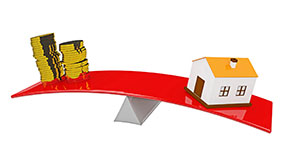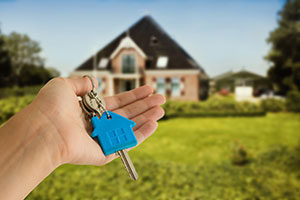 Ever since we were convinced about the usefulness of property as an investment, we have devoted countless hours debating which makes for a better investment: houses or apartments? Decades ago, when we were stuck with our “McMansion in the suburbia” dream, a majority of us would have voted for houses. But now that close-to-CBD life is gaining prominence and we have cleanly departed from the ‘McMansion’ era, the debate has begun to be fought more aggressively. Clearly, the battle lines have been drawn and no side is ready to believe that the other side has enough points to convince them.
Ever since we were convinced about the usefulness of property as an investment, we have devoted countless hours debating which makes for a better investment: houses or apartments? Decades ago, when we were stuck with our “McMansion in the suburbia” dream, a majority of us would have voted for houses. But now that close-to-CBD life is gaining prominence and we have cleanly departed from the ‘McMansion’ era, the debate has begun to be fought more aggressively. Clearly, the battle lines have been drawn and no side is ready to believe that the other side has enough points to convince them.
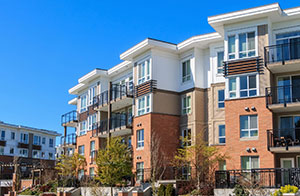 Over the ambit of this article, let us get introduced to both these investment types, read about their pros and cons, take a look at questions you must ask yourself before deciding on an apartment or a house and lastly–but by no means the least–let us take up a really innovative stance (perhaps the best kept secret of real estate) and figure out which is a better deal between the two.
Over the ambit of this article, let us get introduced to both these investment types, read about their pros and cons, take a look at questions you must ask yourself before deciding on an apartment or a house and lastly–but by no means the least–let us take up a really innovative stance (perhaps the best kept secret of real estate) and figure out which is a better deal between the two.
Apartment investment or detached house investment- the “value of land” question
There are those who strongly feel that the value of the property lies in the land and that the building keeps depreciating, even as the land appreciates. In the face of this logic, these people start taking the side of detached houses. There is an opposition camp which refutes the idea, asserting that even the apartment is built on the land and while the owners of units do not own land directly, the land beneath the apartment plot appreciates and in the process takes the price of the individual units upwards.
This camp also feels that even a big land spread over acres in a bad area cannot offer the kind of return which a small land (total land allotted to the apartment divided by the number of apartments) indirectly owned by each unit in a smart neighbourhood can offer. So, there you go! The battle-lines are well and truly drawn.
Greater number of people investing in apartments%22%20transform%3D%22translate(.6%20.6)%20scale(1.17188)%22%20fill-opacity%3D%22.5%22%3E%3Cellipse%20fill%3D%22%23ef8997%22%20cx%3D%22109%22%20cy%3D%2267%22%20rx%3D%2292%22%20ry%3D%2228%22%2F%3E%3Cellipse%20fill%3D%22%23deaf58%22%20rx%3D%221%22%20ry%3D%221%22%20transform%3D%22matrix(16.87211%20-21.99798%2022.25207%2017.067%2053.2%2052.6)%22%2F%3E%3Cellipse%20fill%3D%22%23fdffff%22%20cx%3D%22196%22%20cy%3D%2217%22%20rx%3D%22129%22%20ry%3D%2238%22%2F%3E%3Cellipse%20fill%3D%22%23fff%22%20rx%3D%221%22%20ry%3D%221%22%20transform%3D%22rotate(9.3%20-745%20461.5)%20scale(128.34028%2025.07995)%22%2F%3E%3C%2Fg%3E%3C%2Fsvg%3E)
The ideal question should not be, “which should I invest in between house and units?” It should be, “which one between houses and units will offer me higher ROI in the long term?” Let us take up some interesting data and dissect them. The Real Estate Institute of Australia (REIA) says that over the last decade, the median house prices have shot up by 81% whereas the median has increased by 72% for apartments.
In addition, data for November 2015 says that the rental yields (apartment-centric strategy) for Sydney was 3.1% for detached houses and 4.1% for apartment units. Melbourne returned figures of 2.9% and 4.1% for respective asset classes. This implies that for Melbourne, the gulf between the yield was even greater. For Brisbane, the gap was as good as Sydney, what with houses posting a yield of 4.3% and apartments registering 5.3%.
Buying an investment property: research on shift in demography and gentrification trends
Let us also look at the capital growth. How much did the properties grow over a period of time? Over the last decade, houses have surged by 61.8% in terms of median prices. Over the same span, apartment units have peaked by 57.3%. However, the more recent survey span, which is 5 years, has another story to tell. Over the last 5 years, the apartment median has outperformed the median for houses, posting a 19.8% growth compared to 16% for houses.
The stats were not meant to sway you from one side to the other. These are just stats. All that they do is say loudly that investments in properties are no more heavily biased towards detached houses. Emerging gentrification trends and demographic shifts have ensured that a very high number of people want to live in the four major cities, close to the CBD area and enjoy the café lifestyle. Put another way, café lifestyle is the current drug of our choice, with suburbia being the old one.
Apartment investing: does it bring in as much money as houses?
 Historically speaking, over a bigger period of time, house prices escalate more than units but two statements need to be given out in this context. One, that this is not true over the short and the medium term and two, “prices will rise more for houses than units over the long term” can no longer be said with conviction.
Historically speaking, over a bigger period of time, house prices escalate more than units but two statements need to be given out in this context. One, that this is not true over the short and the medium term and two, “prices will rise more for houses than units over the long term” can no longer be said with conviction.
After all, Australian real estate has reached many ‘firsts’ over the last few years. Apartments have well and truly come into the picture and are attempting to push houses away from the centrestage. I am not too sure what may happen when push comes to shove.
When you buy an apartment or a house, look for the appreciating and the depreciating component
I have heard some of my fellow commentators argue that the land appreciates but the buildings depreciate in value. It is something that I have mentioned earlier in the article. There is, however, a need to know that if you are purchasing a land and house package in the suburbs and paying $500,000 in total, only about $125,000 will have been paid for the land. The remaining would go to building the property.
So, it is not hard to decipher that the part of the asset that is appreciating is a really tiny bit compared to the whole cost. While this is a strong line of argument partly erasing the impact of the “worth of the land”, it is only true for the suburbs.
For the capital cities, detached houses hold most of their value in land. In fact, what actually happens is this: In suburbs, the cost of land is $100,000 and construction is $300,000. In the busy areas of cities, the cost of the land will be close to $600,000 and the cost of construction will seem relatively very low, say, $100,000.
Now that I am talking of figures and how the cost breaks, let me waste no time in taking you through a well guarded secret of real estate. For this purpose, I will have to create a train of thought for you first.
Apartments or houses for sale abide by a few percentages
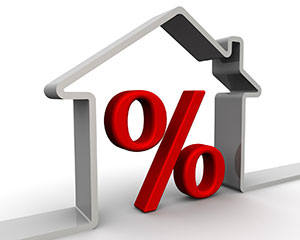 It is a popular opinion that the land value increases by 10% yearly. During the same time span, the value of building decreases by 1.5%. So, what we have on the table are a couple of market forces which head in opposite directions. So, how do they affect the economy of real estate?
It is a popular opinion that the land value increases by 10% yearly. During the same time span, the value of building decreases by 1.5%. So, what we have on the table are a couple of market forces which head in opposite directions. So, how do they affect the economy of real estate?
Given that they both affect each other, let us assume that the cumulative increase in value of houses or units is somewhere between 7% and 10% (subtracting building depreciation from land appreciation and arriving at a percentage factoring in certain secondary and tertiary costs). Taking cue from the land to asset ratio, let us build a hypothetical case and deduce certain figures for ourselves.
Buying a rental property: a hypothesis to explain where your investment can head
Suppose you have $800,000 to spend on a property and you are juggling between the idea of purchasing a three-bedroom apartment or a pretty old detached house on a big block.
Now, for an apartment, let us say you have to pay this $800,000 and the cost is broken as Land- $160,000, building- $512,000 and Developer’s margin- $128,000.
For detached houses, the breakdown will be Land- $720,000 and building $80,000. The developer’s margin is, of course, zero.
We have already established that land appreciates by 10% annually. After the first year, the price of land for the apartment, which is originally $160,000, will become $176,000. After the second year, it will be $193,600. In 5 years, the value of land will be $257, 682 (rounded off to the nearest integer).
Building value depreciates by 1.5% annually. After the first year, $512,000 will become $504,320. After the second year, it will become $496,755. After the fifth year it will be $474,734 (rounded off to the nearest integer).
Overall, the cost of the land and the building becomes $257,682 + $474,734 = $732,416 (8.44% value erosion over 5 years).
Let us take the case of houses now. Working further on our hypothesis, we take up land value as $720,000. In five years, adding 10% annually, the value of land becomes $11, 595,67. Building value, which was $80,000 to begin with, comes down to $74,177. The cumulative value is $11,595,67 + $74,177 = $12,337,44 (54.2% growth in five years)
In case of apartment complex for sale, the land component is pretty small
 What do you decipher as the main reason for such a difference in property value over the 5-year period? Most of us will agree that it is the expense made on the appreciating versus the depreciating factor of the property. Detached houses have a very high percentage of expense made to secure land (now, you can also find for yourself why the same model cannot hold true for suburbs). Land is the appreciating component and hence leads to a very high capital growth for the detached houses.
What do you decipher as the main reason for such a difference in property value over the 5-year period? Most of us will agree that it is the expense made on the appreciating versus the depreciating factor of the property. Detached houses have a very high percentage of expense made to secure land (now, you can also find for yourself why the same model cannot hold true for suburbs). Land is the appreciating component and hence leads to a very high capital growth for the detached houses.
Apartments may have become a better lifestyle choice, the gentrification trends certainly point out that they are finding more loyalists of late. However, when it comes to capital growth, detached houses take the cake.
Houses or apartments for sale: capital growth and equity build-up
This brings us to a very important point. Is capital growth enough? What about positive cash flow? What about that beautiful rental stream which makes mortgage payment and equity creation a stress free exercise? Let me answer this question for you.
There are many investors who negatively gear their properties to derive tax benefits out of the strategy. They aim for capital growth and do not mind paying out of their pockets (their mortgage is more than the rent they collect).
Rental property mortgage: Investors look for income stream
On the other hand, there are investors who look for an income stream and gear their properties positively. These real estate investors certainly like the idea of apartment units. Of course, there are many investors who have a large portfolio and they balance both kinds of gearing. So, for them, both the units and houses are part of their investment strategy. The question for them turns into “which city area should I devote to house purchases and which one to units?”
Apartment search: seek in high-value land-locked suburbs
 Also, the moral of the story is not as simple as it seems. Had it been so, all of us would be buying detached houses. Even in terms of capital growth, the counterpoint is provided by those apartments which are sitting on high-value land-locked suburbs. Here, the land is at a premium and your indirect share as the owner of a unit on such a land will still give you handsome capital growth. Of course, this is only possible if your strata fees are low enough (we will get to the body corporate fees a little later in the article).
Also, the moral of the story is not as simple as it seems. Had it been so, all of us would be buying detached houses. Even in terms of capital growth, the counterpoint is provided by those apartments which are sitting on high-value land-locked suburbs. Here, the land is at a premium and your indirect share as the owner of a unit on such a land will still give you handsome capital growth. Of course, this is only possible if your strata fees are low enough (we will get to the body corporate fees a little later in the article).
I do hope I have a simple formula for this. If the value of the land is in deficit of 10% of the apartment price, your investment will collapse because the appreciation of land (unless it is priced at a real premium) will not be able to hold the slide triggered by building depreciation.
Affordable apartments expected because of oversupply
Another trend that is very interesting to note and can have some real implications is the number of people in the household. In Australia, we are witnessing a rare period of the number of single and double person households being so high. It has never been this high before. The Australian Bureau of Statistics (ABS) has indicated that the lone-person households in Australia will swell even further, and grow from 1.8 million in 2001 to somewhere between 2.8 million and 3.7 million in 2026.
These people want to live close to the city. With the population growing and the less number of people populating an average household, we will be fairly short of housing options. Speaking of which, it is important to concede that developers will keep creating apartments in a flurry, but it is the new stock of detached housing which will come under the radar.
Owning rental property- price is a function of demand and supply
 The number of new commencements will fall terribly short of the number of total completion that even the construction and the labour industry working in tandem will be able to do little to bridge the gap. The entrepreneurial capacity of developers (leading to an oversupply of apartments) and the comparative lack of enterprise of the detached house constructors will determine how these two different housing options are supplied and how they are priced in the coming years. Naturally, we will see some changes in the median prices for sure.
The number of new commencements will fall terribly short of the number of total completion that even the construction and the labour industry working in tandem will be able to do little to bridge the gap. The entrepreneurial capacity of developers (leading to an oversupply of apartments) and the comparative lack of enterprise of the detached house constructors will determine how these two different housing options are supplied and how they are priced in the coming years. Naturally, we will see some changes in the median prices for sure.
When I speak about supply, let me not miss out on sharing with you, dear readers, that price is but a function of both the market forces, namely, demand and supply. Some of us who have had the chance to study Economics will quickly reminisce that the price of an object depends upon how many people are seeking it (demand) and how much quantity there is (supply).
For apartments, a market of oversupply can become the norm pretty quickly. It is because once the apartments start getting built, there is no way to halt their construction. For detached houses, this is not true. It is easy enough to construct a single house and halt further construction midway.
Investment property: builders can halt house projects unlike apartments
When home builders take up a project, they construct one or two homes, and only when they have signed contracts based on sample projects would they have to build further. So, in short, the supply can be halted at any time. With apartments, the scene unfolds differently. Let us say that a block has 300 units. Now the lending institution would want the developer to sell a bare minimum of 70% of the stock.
This gets us to a figure of 140 units. So what happens to the other 60 units? The developer will hope like hell that he will be able to sell the remaining 60 units the moment the project is completed. Keep in mind, however, that we are talking about a buyer’s market because of the huge oversupply of apartments and thus the prices can drop considerably.
So, sometimes, if not often, the apartments may be resold at a price lower than their purchase price. This can be put down to oversupply and also the land to asset ratio that I explained via a hypothesis above.
Apartment buildings for sale: they can be brilliant as investments, too
It’s not that I have a bias towards houses. Yes, during my adolescent years, when the old world charm of pretty detached houses in the suburbs was not lost on me, the sparse development of blocks seemed to break the harmony of the place. But, being a buyer’s agent for as long as I have been, I have come to savour many aspects of apartment units.
Apartments can be brilliant investments, too.
Pros and cons of buying an apartment
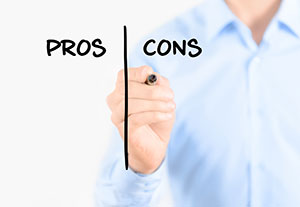 They are cheaper to maintain. The cost of upkeep is diluted by economy of scale, after all. To elaborate, the body corporate sets a fee and it needs to be paid, but then, it’s easy to argue that taking care of 100 water heaters (and dividing the cost by 100) will be a lot cheaper than getting your personal water heater repaired in your detached house. In bulk, things cost less and this is why I talked about the economy of scale.
They are cheaper to maintain. The cost of upkeep is diluted by economy of scale, after all. To elaborate, the body corporate sets a fee and it needs to be paid, but then, it’s easy to argue that taking care of 100 water heaters (and dividing the cost by 100) will be a lot cheaper than getting your personal water heater repaired in your detached house. In bulk, things cost less and this is why I talked about the economy of scale.
Apartments rent out a lot more easily. This can be attributed to the love many of us feel for a CBD, café lifestyle. Net interstate migration figures for Sydney attests to this line of thinking.
Most of the new units are being developed in high land-value zones in the capital cities. If not the CBD, the apartment constructions are being pursued in the beach areas and highly desirable suburbs.
There is a big demand for apartment units. The gen X loves them, the gen Y loves them and so do the downsizing baby boomers who want to live close to the amenities and facilities. They do not want to be far away from transport hubs or wellness centres or hospitals. The demographic shift is a very real barometer.
It is only hoped that the apartments also introduce the novelty or the scarcity factor and somehow keep away from the persistent threat of oversupply. After all, developers are a very tough fraternity. Once they get a finger in, it does not take them long to get their entire body in.
Human beings are a social species and the feeling of sharing community space is unparalleled. This to me is another very big attraction of apartment living.
All this said, apartments have their disadvantages, too:
There is not as big a chance of capital appreciation as there is in houses. A higher land-to-asset ratio will mean that houses will grow more than apartments over a long term (to be safe, over a couple of property cycles).
There is a clear difficulty in posting capital gain in a unit. First, because you have to strictly follow the body corporate; second, you do not have much say in the external look of the unit; and third, you cannot modify or develop the land in any possible way. The worst part is that the value of the unit is judged by the value of the cheapest unit of the block.
In other words, your beautifully done unit on the 12th level is likely to sell at the cost of the badly done, no-view unit on the 5th floor. So, why do people renovate? So that they can live in them themselves for a selected period of time and also so that the property becomes easier to rent.
Buying investment properties: questions to ask yourself
So, what should it be: houses or apartments? Answer these questions and you will get a sure enough idea.
- What are the other buyers and prospective renters looking for in the area you are eyeing? Are the numbers tilted towards detached houses or units?
- How is your portfolio diversified? Does it have a very high ratio of one investment type compared to the other?
- What is your budget? If it is nothing too big, you can settle for an apartment.
- Where are you at in life? If you are close to retirement and your income is diminishing, you would not want to have a big commitment on your head. An apartment may suit you more.
- Are you looking to occupy the property yourself sometime in the future? If yes, what is your personal preference?
- Are you looking to renovate the property moving ahead? If yes, you will be struck on the head by body corporate compliances. A house will be a better idea.
- Are you ready to abide by all kinds of rules, including, but not limited to, prohibition of pets, need of permission for installing an acoustic floor and so on?
- Are you seeking a regular stream of income? If yes, positive cash flow by way of apartment units will suit you more.

